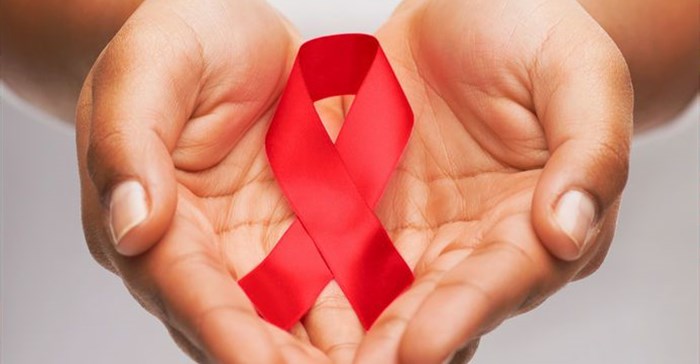The disease that killed her was cryptococcal meningitis. It is a killer in the dark, responsible for an estimated 181,000 worldwide in 2014, of which 135,900 were in sub-Saharan Africa. Most were people who had been living with HIV. The cryptococcus fungus is everywhere in the environment and for people with a working immune system it causes no harm. But in people with HIV who have a weak immune system it can invade the lining of the brain and other organs, quickly leading to death unless treated.
Most people who die from cryptococcal meningitis are under the age of 40. Yet, with early diagnosis and the best available treatment, mortality can be reduced to 30% of what it is currently.
Why, then, do people still die? It is not because the lifesaving tools and treatments are unaffordable. The CrAg-LFA, a rapid finger-prick test to detect antibodies to cryptococcus in blood and spinal fluid, costs only $2. The drug flucytosine, which if widely available would reduce deaths from cryptococcal meningitis by as much as 40%, costs only $100. The other key drug needed for treatment, amphotericin B, is affordable for health department budgets in its convential formulation, while the less toxic liposomal form of amphotericin B remains too expensive for most.
Saving lives does not require high tech tools, but simple point-of-care tests. The key medicines are decades old, generally simple to produce, and off-patent. The biggest part of the treatment cost is that of basic hospitalisation and medical staff. The real problem lies higher up, with a lack of political will to address this leading cause of HIV-related mortality.
In May 2021, a group of health organisations based in Africa, Europe and the US released the Strategic Framework for Ending Cryptococcal Meningitis Deaths by 2030. It calls on the World Health Organisation, donors, governments, civil society organisations and industry to set clear targets, draw up plans and work together to drastically reduce deaths from cryptococcal meningitis.
Preventable deaths
Tens of thousands of people die unnecessarily because cryptococcal meningitis has been neglected.
There is a global strategy to end deaths from tuberculosis, but no strategy to end cryptococcal meningitis. A strategy is crucial for priority setting, resource allocation and planning. It focuses attention on the steps needed to end cryptococcal meningitis deaths and who should be responsible for addressing those steps.
Access to tests and optimal treatment remains extremely limited in clinics in sub-Saharan Africa. Flucytosine, the cornerstone medicine for treatment, isn’t registered in any country in Africa. Pharmaceutical companies rarely apply for registration if the market is not deemed to be profitable. Governments do not include unregistered drugs in national guidelines. In the case of flucytosine this catch-22 situation led to market failure.
There is reason to hope, however.
A few years ago the South African National Institute for Communicable Diseases, with support from the US Centers for Disease Control, scaled up systematic screening for cryptococcal meningitis of people with HIV with severe immune suppression. This helped to diagnose more people but without flucytosine the treatment was still suboptimal. A number of public sector doctors started treating patients with flucytosine after obtaining exemptions from the South African regulator to use an unregistered drug.
Read more:
Explainer: how South Africa regulates medicines and vaccines
This inspired Doctors Without Borders to start a clinical access programme to donate flucytosine to one hospital in every province of South Africa. Early results already show much lower mortality in patients treated with flucytosine. The clinical access programme was taken over by the Clinton Health Access Initiative and expanded to provide supplies for advanced HIV disease to nine countries.
Spurred by the prospect of increasing demand, a large Indian manufacturer of generic medicines took over the production of flucytosine and applied for registration in a number of African countries, including South Africa. An increasing number of national guidelines now include the treatment recommended by the World Health Organisation.
Yet, despite this progress, most people with cryptococcal meningitis remain without a diagnosis and without optimal treatment. This is why a global strategy is needed. The strategy must have clear targets and a roadmap to scale up access to tests and medicines. Transforming cryptococcal disease from a silent killer into a disease that is mostly cured is achievable at a modest cost.
Call for action
The last time I saw Thembi was in consultation days before she died in 2009. She was a shadow of the person I had started on antiretroviral treatment a couple of years earlier.
After interrupting treatment, she had gradually lost weight and was increasingly confused. My heart sank when I read the referral letter: cryptococcal meningitis. With late diagnosis and optimal treatment out of reach, I knew the prognosis was poor.
The call for attention to cryptococcal meningitis is a plea to bring this neglected cause of death out of the darkness. This can be done by ensuring that testing and treatment becomes available everywhere.
Dr Amir Shroufi, medical advisor at the CDC Foundation contributed to the article.
This article is republished from The Conversation under a Creative Commons license. Read the original article.









































